If you’ve ever dreamed of a place where ancient temples shimmer at sunset, the scent of sizzling street food fills the air, and mountains cradle the city in a cool, green embrace – welcome to Chiang Mai!. But before you pack your bags, there are a few things to know before you go to Chiang Mai that can make the difference between a good trip and an unforgettable one.
Too many travelers rush in with only a checklist of top attractions and miss the real soul of this northern Thai gem, such as the twilight glow over Doi Suthep, the warmth of chatting with market vendors, the calm of a riverside café, or the serenity of a hidden jungle temple. Skip the prep, and you might end up tangled in tourist traps, missing those magical moments that make Chiang Mai unforgettable.
That’s where this guide steps in. Think of it as your personal travel compass, where we help you navigate temples, night markets, coffee culture, digital nomad buzz, wellness retreats, and mountain escapes with confidence. By the time you’re done reading, you won’t just know where to go , you’ll know how to feel truly at home in Chiang Mai.
At-a-Glance Practical Info for Visiting Chiang Mai in 2025
Chiang Mai sits in the mountainous north of Thailand, in the Chiang Mai Province, and operates on Indochina Time (ICT), which is GMT+7. The local currency is the Thai Baht (THB), and Thai is the official language, though English is widely understood in tourist areas. For emergencies, dial 191 for police, 199 for fire, and 1554 for medical assistance.
Getting to Chiang Mai is straightforward, with Chiang Mai International Airport (CNX) just 15–20 minutes from the Old City. Major airlines like Thai Airways, AirAsia, and Bangkok Airways connect the city to Bangkok in about 1 hour, while flights from Singapore take just over 3 hours. If you’re wondering how to get to Chiang Mai from Bangkok, you can also opt for overnight trains or buses for a scenic journey.
Visa requirements depend on your nationality. Many travellers can enter visa-free for 30–45 days, while others need a tourist visa. For the latest rules, always check the official Thai Immigration website. As for vaccines, routine immunizations are recommended, and while COVID-19 or monkeypox checks are currently minimal, travel insurance is highly advised for peace of mind.
Money matters are simple here. ATMs are everywhere, credit and debit cards are widely accepted in hotels, malls, and restaurants, but keep cash handy for markets and street food stalls. Tipping in Chiang Mai isn’t mandatory, but leaving small change or rounding up the bill is appreciated for good service.
When to Go — Weather, Crowds & Events in Chiang Mai

If you’re wondering what’s the best time to visit Chiang Mai, the answer depends on whether you’re chasing cool breezes, cultural festivals, or budget-friendly quiet months.
Chiang Mai enjoys a tropical climate, with November to February bringing cool, dry days around 15–28°C and low humidity, which is absolutely perfect for sightseeing and outdoor adventures.
March to May is hot season, with temperatures soaring to 35°C, while June to October is rainy season, marked by lush landscapes, afternoon showers, and fewer tourists.
High season runs from November to February, when prices peak and popular temples, markets, and trekking spots get busy.
Shoulder months like March, April, and late October offer a balance of fewer crowds and still-decent weather. Low season falls during the monsoon months, when accommodation deals are easiest to find, but you’ll need to plan around occasional heavy rain.
Chiang Mai’s cultural calendar is a huge draw. In April, you have the Songkran festival, the Thai New Year water festival which turns the city into a giant street party.
In November, Loy Krathong and Yi Peng see thousands of floating lanterns and sky lanterns light up the night in a magical spectacle. If you want to see the sky lanterns, plan your visit for Yi Peng and choose an event that uses biodegradable lanterns to minimize environmental harm.
During the cool months, bring light layers for early mornings and evenings, along with temple-appropriate clothing that covers your shoulders and knees.
If you’re travelling during the summer season, we advise you to bring breathable fabrics and strong sunscreen, while rainy season travelers should pack a light rain jacket, quick-dry clothing, and insect repellent. No matter when you go, comfortable walking shoes are a must if you are walking through Chiang Mai’s markets, temples, and alleys.
Where to Stay in Chiang Mai — Best Areas for Every Traveler
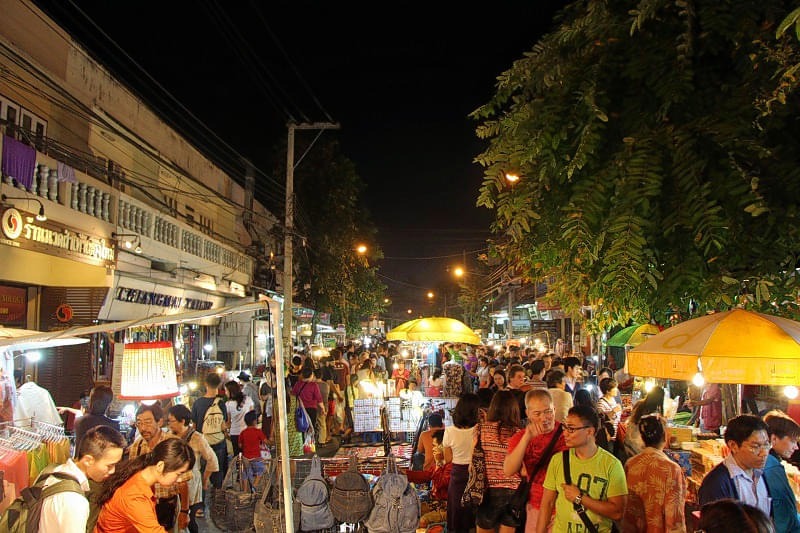
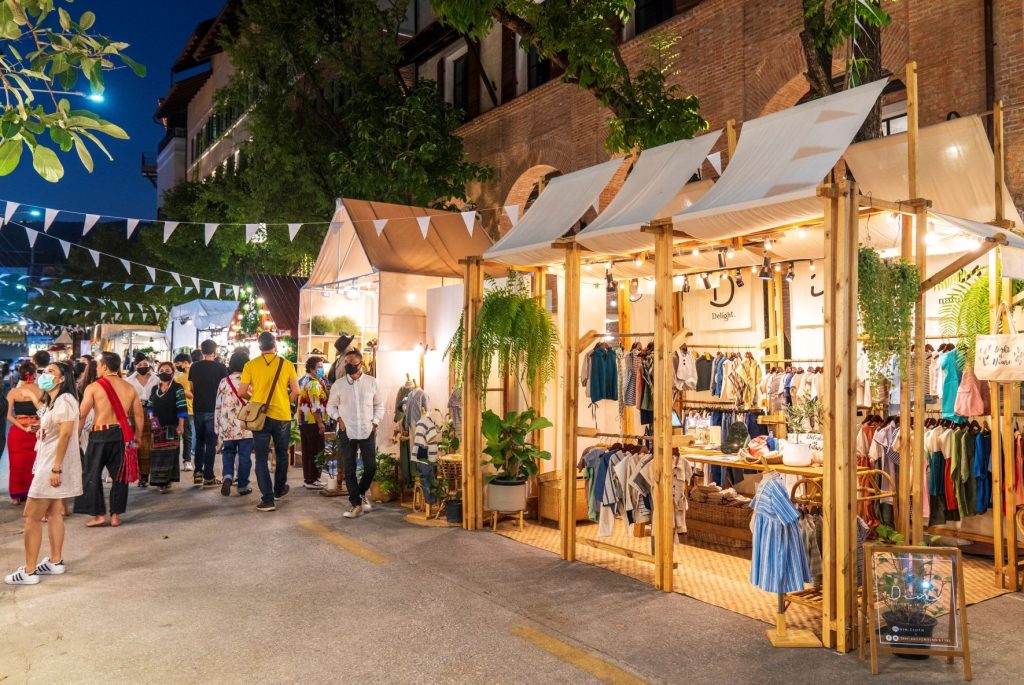
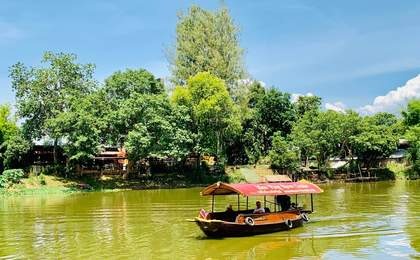
If you’re asking what’s the best area to stay in Chiang Mai, it really depends on your travel style. The Old City is perfect for first-time visitors who want to be surrounded by historic temples, charming lanes, and easy access to the Sunday Walking Street Market. Staying here means you can explore most sights on foot, with plenty of guesthouses, boutique hotels, and mid-range stays right inside the ancient moat walls.
Nimmanhaemin Road, or simply “Nimman,” is Chiang Mai’s trendy heartbeat. Loved by digital nomads and café hoppers, it’s filled with artisan coffee shops, boutique hotels, co-working spaces, and lively nightlife. If you want to experience Chiang Mai’s modern creative side without losing touch with its cultural charm, this is your spot.
For romance and riverside charm, the Ping River area offers boutique resorts, serene views, and upscale dining. It’s ideal for couples seeking a quieter stay, away from the hustle, but still close enough to reach the Old City in minutes.
Shoppers, meanwhile, will appreciate the Chang Phueak and Night Bazaar area, where you can step out of your hotel and into a maze of stalls, craft shops, and street food vendors.
If you’d rather wake up to mountain air and natural surroundings, look beyond the city. Stays near Chiang Mai Night Safari or in hillside lodges around Doi Suthep and Mae Rim offer a peaceful retreat, with options from rustic cabins to luxury eco-resorts.
Accommodation ranges from five-star names like Anantara Chiang Mai Resort, to mid-range favorites like BED Nimman Hotel, to budget hostels such as Stamps Backpackers, and even co-living spaces like Hub53 for long-term remote workers.
Top Things to Do in Chiang Mai in 2025
Let’s say your pondering over what are the must-do activities in Chiang Mai, here’s the truth , the magic is in balancing famous landmarks with experiences that many tourists miss. This breakdown will help you plan like you’ve been here before.
Cultural & Historical places to Visit in Chiang Mai
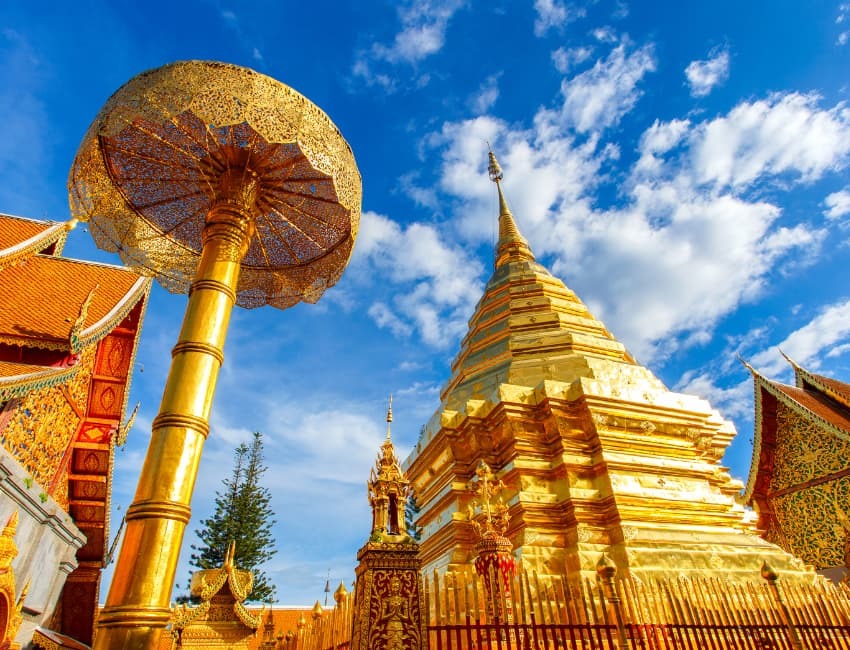
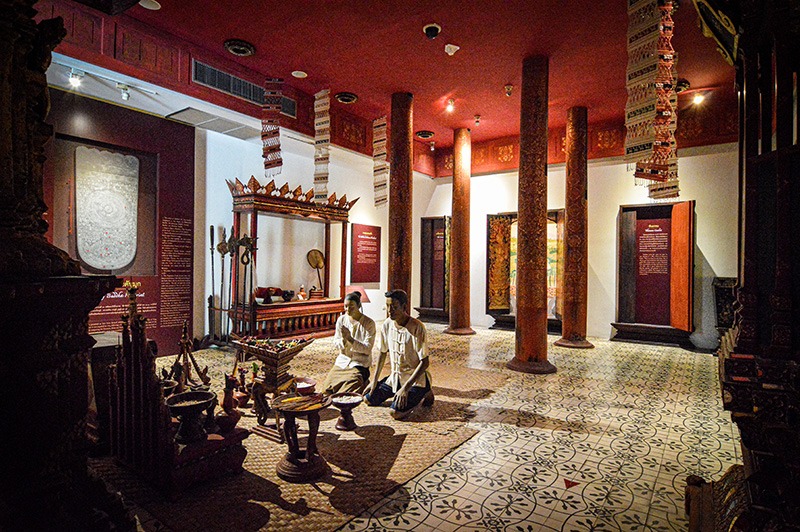

Start with Wat Phra That Doi Suthep, perched 15 km from the city. The best time to visit is at sunrise (around 6:30 am) when the golden chedi glows in the morning light and the crowds are minimal. You can get there in 30 minutes by songthaew (shared red truck), hire a private driver, or join a guided sunrise tour that includes monk chanting.
Climb the 306 naga-flanked steps or take the cable car, and remember to cover your shoulders and knees. Back in the Old City, Wat Chedi Luang’s towering brick stupa dates back to the 14th century, Wat Phra Singh houses a revered Buddha image, and Wat Chiang Man is Chiang Mai’s oldest temple, built in 1296.
For context, the Lanna Folklife Museum and Chiang Mai City Arts & Cultural Centre both explain the region’s art, traditions, and architecture in engaging detail.
Markets & Food to Explore in Chiang Mai
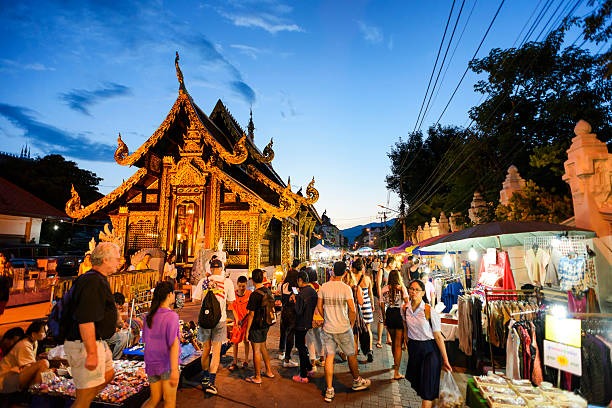
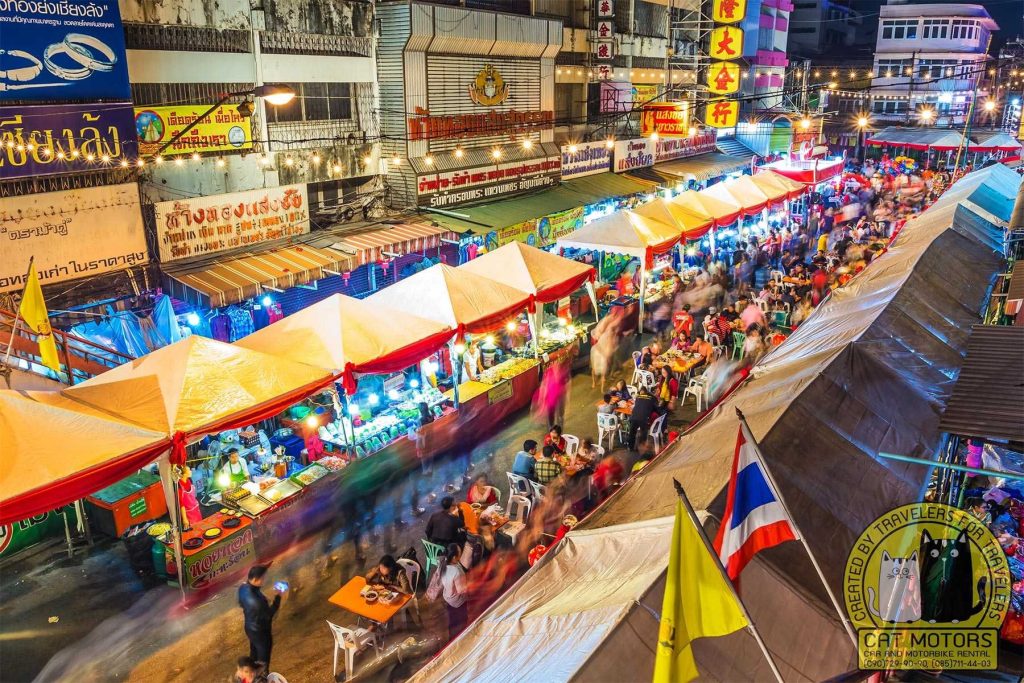

On Sundays from 4 pm to 10 pm, the Sunday Walking Street which stretches from Tha Phae Gate along Ratchadamnoen Road, is filled with stalls selling hill-tribe textiles, silver jewelry, and local snacks like coconut pancakes.
Warorot Market (Kad Luang) is open daily from 6 am to 6 pm near the Ping River, where locals buy fresh herbs, dried fruits, and handwoven fabrics.
The Night Bazaar on Chang Klan Road runs nightly and is great for souvenir shopping, while Saturday’s Wualai Walking Street offers handmade silverware from local artisans.
For food, don’t leave without trying Khao Soi at Khao Soi Mae Sai, Sai Oua sausage at Huen Muan Jai, Khanom Jeen at Huen Phen, and mango sticky rice from the Chang Phuak Gate night stalls.
Nature & Adventure to Explore in Chiang Mai

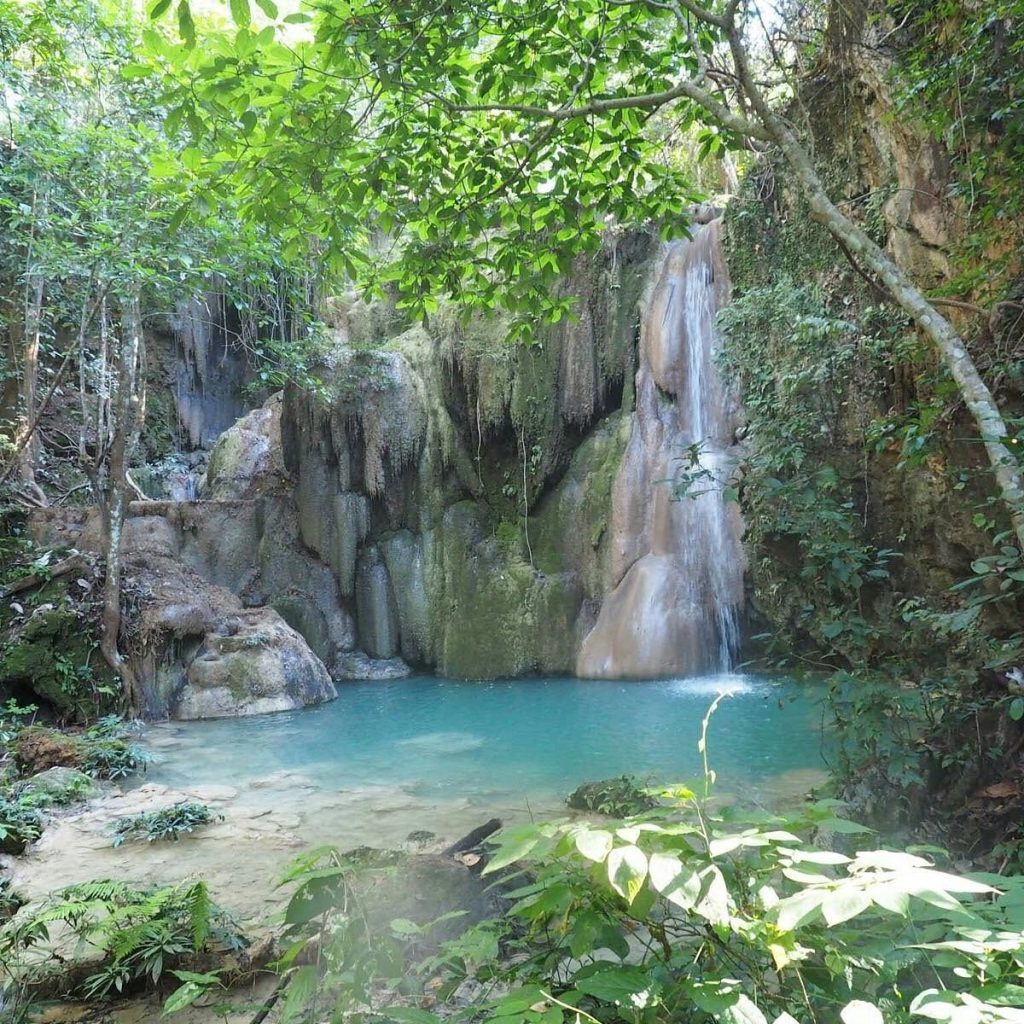

Doi Inthanon National Park, about a 1.5-hour drive from Chiang Mai, is home to Thailand’s highest peak (2,565 m), with misty viewpoints, Wachirathan and Siriphum waterfalls, and the twin royal chedis dedicated to King Bhumibol and Queen Sirikit.
Visit between November and February for cool, clear days. The Sticky Waterfall (Bua Thong) in Mae Taeng, approximately 1 hour north, is ideal for families due to its mineral-rich limestone, which makes walking barefoot easy. For a spike in adrenaline, Flight of the Gibbon offers you eco-conscious zipline tours, and the Mae Taeng River is ideal for white-water rafting from July to October when water levels are high.
Day Trips & Short Excursions in Chiang Mai

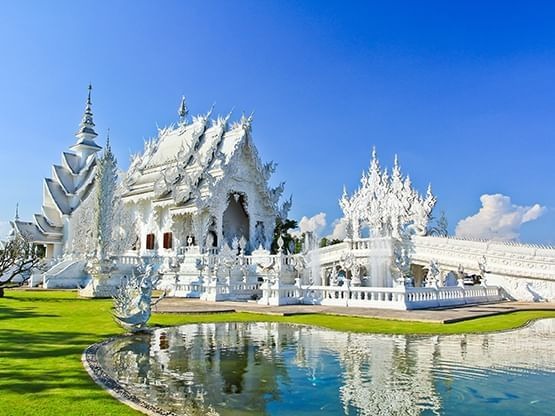

Pai, a mountain town about 3 hours northwest, is best to visit during the cool season (Nov–Feb) for hot springs, Pai Canyon sunsets, and slow travel vibes.
Chiang Rai, about 3 hours northeast, is famous for Wat Rong Khun (White Temple) and Wat Rong Suea Ten (Blue Temple), which can be visited on a one-day tour or an overnight trip.
Ethical hill-tribe visits are possible through organizations like Akha Ama Coffee, which reinvests profits into local communities, ensuring fair pay and cultural preservation.
Wellness & Slow Travel
Chiang Mai is Thailand’s wellness capital. Try an authentic Thai massage at Fah Lanna Spa or Oasis Spa, or join a yoga class at Wild Rose Yoga Studio. Meditation retreats like the ones at Wat Umong or Mahasiddha Yoga offer short-term programs for travelers who want to combine mindfulness with exploration.
Responsible Travel & Wildlife to Explore more in Chiang Mai
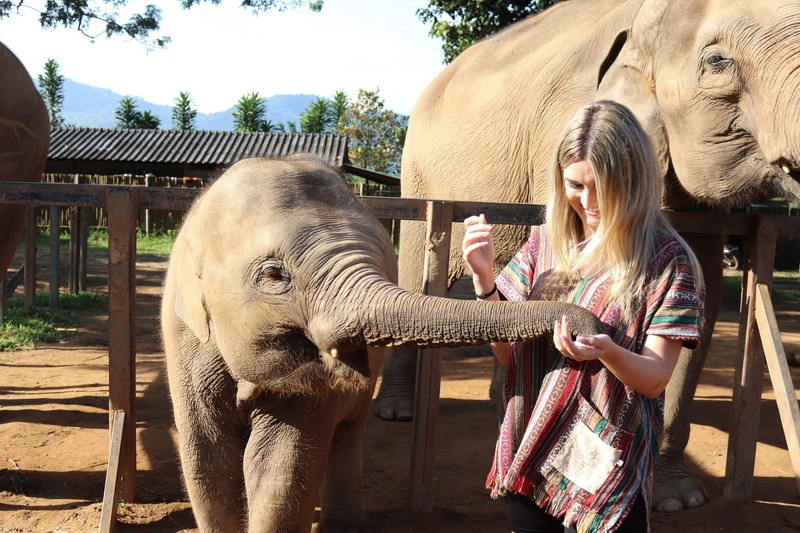
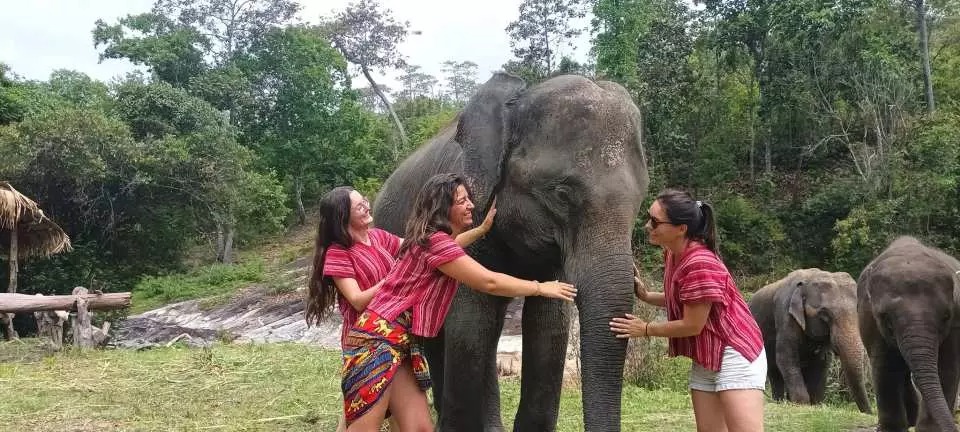
Suppose you’re searching for where to see elephants in Chiang Mai ethically. In that case, Elephant Jungle Sanctuary and Secret Elephant Sanctuary are two reputable options with no rides, no chains, and plenty of space for elephants to roam.
For trekking, hire guides who respect wildlife corridors and follow Leave No Trace principles. When visiting rural communities, always ask before photographing people, purchase goods directly from artisans, and avoid staged “cultural shows” that exploit traditions.
Food & Drink Deep Dive in Chiang Mai
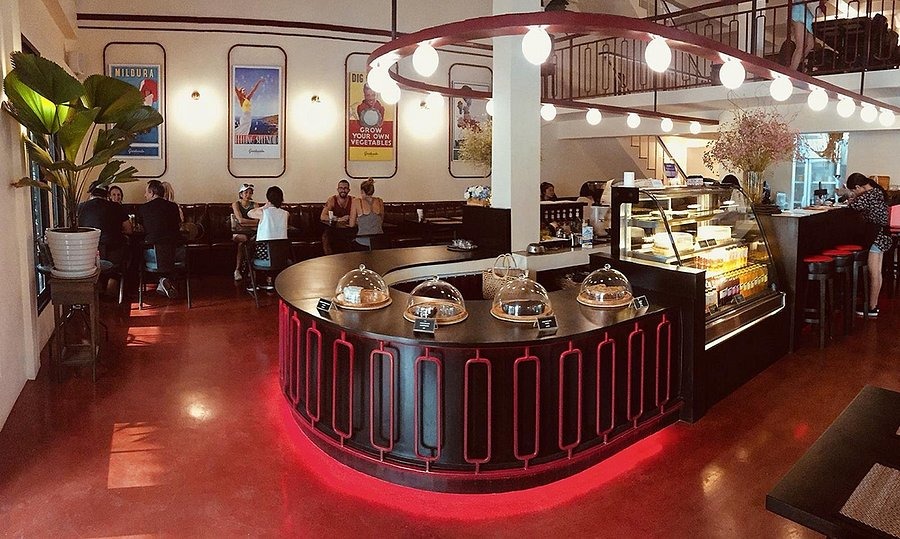
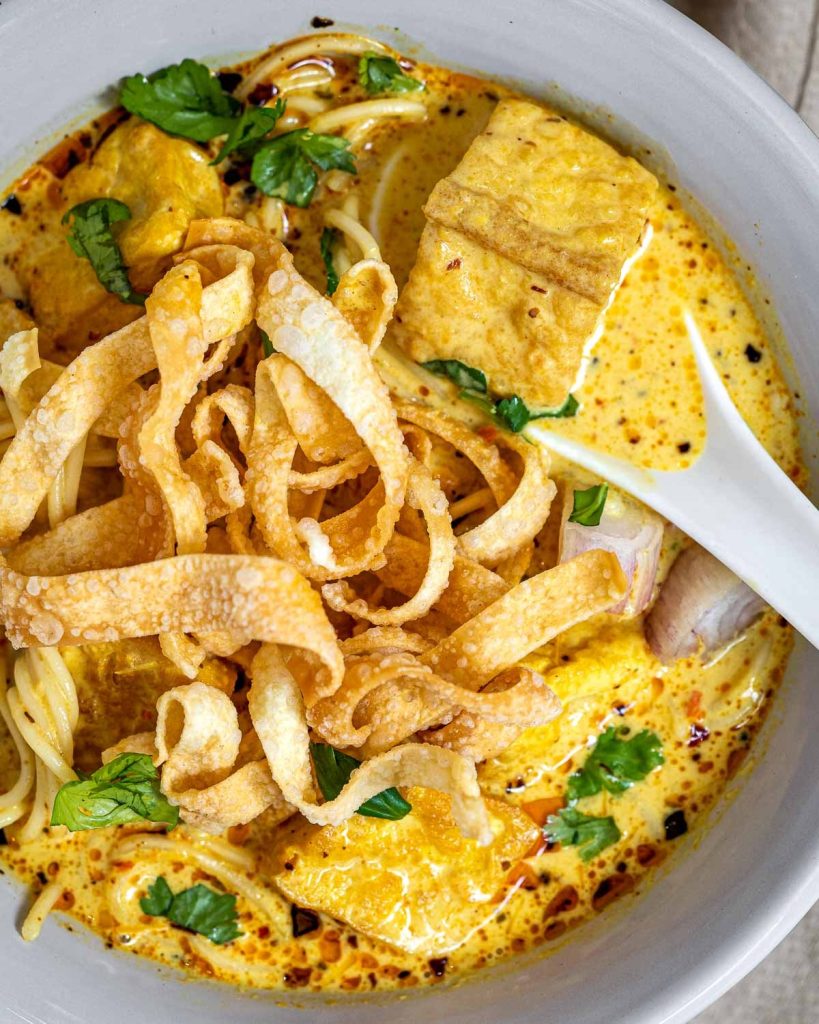
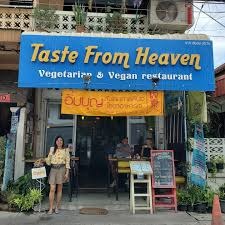
Discovering authentic Northern Thai (Lanna) cuisine is a must for foodies exploring Chiang Mai. Top local restaurants such as Huen Phen and SP Chicken serve classic dishes like khao soi and sai ua, ensuring true flavors of Lanna land. For travelers asking, where do locals eat Northern Thai food? , the Old City and Chang Phuak Gate area is the spot to be at because they have many stalls open late into the evening.
Wondering about the best street-food areas in Chiang Mai for a safe taste adventure? Head to the bustling Chang Phuak Night Market or Saturday Walking Street near Wualai Road, where vendors maintain good hygiene by using gloves and fresh ingredients.
Always choose stalls with busy locals, visible hand-washing stations, and clean cooking setups
The vegetarian and vegan food scene in Chiang Mai is thriving, with plant-based options at establishments like Taste From Heaven and Goodsouls Kitchen. People also do wonder as to is northern Thai food vegetarian-friendly?” and yes, tofu khao soi, mushroom laab, and coconut curries offer delicious and wholesome vegan choices, with many eateries clearly labeling plant-based dishes.
Chiang Mai’s coffee culture is legendary, especially in trendy Nimman, a specialty café hotspot. Sip single-origin brews at Ristr8to or indulge in latte art at Roast8ry Lab, because these are the spot to your query to where are the best coffee shops in Chiang Mai?”
Nimman’s cafés provide excellent Wi-Fi, cozy atmospheres, and Instagram-worthy drinks, making them perfect for digital nomads and caffeine lovers.
Want to cook your own Thai delights at home or join a cooking class? Visit Warorot Market or Sompet Market to shop for fresh herbs, spices, and traditional ingredients, with vendors happy to share advice and tips on authentic produce for your Lanna culinary adventure.
How to Travel In and Around Chiang Mai
Getting around Chiang Mai is refreshingly simple, whether you’re zipping from Chiang Mai International Airport to the Old City or exploring its charming neighborhoods.
From the airport, most travelers choose a taxi or book a Grab ride for door-to-door convenience, though the airport bus is a budget-friendly option that drops you at key city points. If you’re wondering, what’s the cheapest way to get from Chiang Mai Airport to the city?”, the airport bus wins on price, but Grab offers the most comfort.
Within the city, tuk-tuks and songthaews (the iconic red trucks) are everywhere and great for short hops or flexible routes. Grab is handy for air-conditioned rides, while scooter rentals are popular for those comfortable navigating traffic.
Just remember the helmet law and check rental insurance terms. If you’re thinking about how you rent a scooter in Chiang Mai without a license, well hello! that’s illegal! Technically, you need an international driving permit for motorcycles, and skipping it could void your insurance. Cycling is another eco-friendly choice, especially in quieter areas like the Old City and Nimman.
For longer trips, overnight trains to Bangkok are a scenic, slow-travel option, while buses and domestic flights connect Chiang Mai to other Thai cities quickly. Renting a car or motorbike can give you freedom for day trips to places like Pai or Doi Inthanon, but always check insurance coverage carefully.
If you’re searching is Chiang Mai accessible for travelers with limited mobility? Fret not, cause you have many modern hotels and attractions that now have ramps and elevators, though older temples and uneven pavements can be tricky, so planning ahead is key.
Chiang Mai Itineraries – Powered by Thrillark Adventures
Your time in Chiang Mai can be as short as 24 hours or stretch into weeks of discovery. These itineraries blend cultural highlights, nature adventures, and ethical wildlife encounters, plus, every activity below is bookable directly from our Things to Do in Chiang Mai.
24 Hours – Quick & Iconic Highlights
Begin your day with a visit to Wat Chedi Luang and Wat Phra Singh using the City Temples Tour for a seamless experience. In the afternoon, head to Doi Suthep with a guided transfer and catch the sunset from the mountaintop. Finish with a lively evening exploring the Night Bazaar, sampling street food and browsing local crafts.
Explore Chiang Mai temple & city tours →
3 Days – Culture, Cuisine & Market Life
Day 1 kicks off with Chiang Mai’s historic temples and a peaceful Doi Suthep sunset. Day 2 turns hands-on as you join a cooking class that includes a visit to a local market and farm. Day 3 dives into food culture at the vibrant Night Market or Sunday Walking Street, with snacks and souvenirs around every corner.
Book Chiang Mai food & culture experiences →
5–7 Days – Nature, Wildlife & Scenic Day Trips
Start with the 3-day essentials, then explore Doi Inthanon National Park—complete with waterfalls, twin chedis, and a Karen village stop. Pair it with a day at the Sticky Waterfall & Elephant Sanctuary, where you can ethically engage with conservation-focused wildlife. Wrap up with day trips to Pai’s mountain vibe or Chiang Rai’s iconic temples.
2 Weeks — Deep Dive + The Northern Loop
Spend the first week exploring temples, markets, and wellness in Chiang Mai. Then embark on the Northern Loop: begin with Pai’s hot springs and canyon views, journey through mountain roads to Mae Hong Son, and conclude with a cultural visit to Chiang Rai. Sprinkle in activities like bamboo rafting or zip-lining to elevate the adventure.
What Are the Cultural Etiquette Rules You Should Know Before Visiting Chiang Mai?
If you’re visiting Chiang Mai, understanding local culture and etiquette will make your trip far smoother and more meaningful. One of the first things you’ll notice is the deep respect for temples, or wats. When visiting, dress modestly—cover shoulders and knees—remove your shoes before entering, and avoid pointing your feet toward Buddha images. Photography is usually allowed, but always check for signs and never take intrusive shots during prayers or ceremonies.
How do people greet each other in Chiang Mai? You’ll often see the wai—a slight bow with hands pressed together at chest level. It’s used as a sign of respect, especially toward elders, monks, and people in authority. Speaking of monks, remember that women should never touch them or hand them items directly.
Are there things you should avoid doing in Thailand? Absolutely. Never disrespect the royal family—it’s both culturally offensive and illegal. Avoid touching people’s heads (it’s considered sacred) and don’t point your feet at anyone or anything sacred. These may seem like small gestures, but they carry a lot of meaning in Thai culture, and following them shows you’re a considerate traveler who truly values the local way of life.
Digital Nomads & Long-Term Stay in Chiang Mai
Chiang Mai’s welcoming vibes and affordable lifestyle make it a top choice for digital nomads, especially those searching for “best neighborhoods for remote work in Chiang Mai” or “where do digital nomads stay in Thailand.” Nimman is a hotspot, packed with sleek co-working spaces like Punspace and Kawee Café, plus cozy coffee shops and fast fiber internet. If you ask Google Voice Search, “Is Chiang Mai good for remote work?”, you’ll get glowing reviews citing Nimman’s trendy atmosphere and strong community feel.
Visa options in 2025 include the new Destination Thailand Visa (DTV), which allows digital nomads and remote workers to stay up to 180 days per entry and is valid for five years. To qualify, applicants must be at least 20 years old, provide proof of at least 500,000 THB in savings, and show remote work employment with a non-Thai company. People also ask, “Can I work online in Thailand on a tourist visa?”—with Google snippets confirming you’ll need the digital nomad or business visa for legal long-term stays and remote work.
Affordable SIM cards and eSIM options abound, making mobile internet simple and smartphones always connected. TrueMove, AIS, and DTAC are the leading providers for fast 4G/5G, and short-term packages are available at the airport and major malls. Google frequently answers popular nomad queries like “best SIM for Thailand” and “how to get eSIM in Chiang Mai,” recommending vendor kiosks in Maya Mall and Central Festival for convenience.
Cost of living remains attractive in Chiang Mai, with average monthly expenses for nomads around $900–$1,200 including rent, coworking, meals, and entertainment. Google’s “People Also Ask” routinely answers “How much does it cost to live in Chiang Mai as a digital nomad?” and emphasizes rental deals, cheap local markets, and budget street food.
Healthcare is another ease point for expats, with English-speaking clinics like Chiang Mai Ram Hospital and Bangkok Hospital offering walk-in care, travel health services, and emergency treatment. Search engines regularly direct users asking “Is healthcare good for expats in Chiang Mai?” or “best short-term clinics for foreigners” to reputable hospital contacts and advice on carrying global health insurance or travel plans for peace of mind.
Whether you’re setting up for a few months or making a longer move, Chiang Mai remains a welcoming hub for remote work, with reliable internet, affordable living, and friendly local services—all top results in voice search and NLP-friendly Google snippets.
Beyond the Brochure: Chiang Mai’s Hidden Corners
Before you pack up your backpack or close your laptop for the day, let’s talk about the Chiang Mai you won’t find in glossy travel brochures. Locals will nudge you toward tiny coffee roasters tucked down quiet sois, where beans are roasted with the same patience monks give to morning chants. Wander into small neighborhood markets and you’ll find stalls selling herbs you can’t quite pronounce but will definitely remember. And if you’re lucky enough to time your visit with a lesser-known festival—think candle-lit parades or lanterns drifting through a night sky—you’ll feel like you’ve been let in on the city’s best-kept secret.
Of course, the magic of Chiang Mai lies in how it blends the well-known with the wonderfully unexpected. So while you tick off your bucket list with things to do in Chiang Mai, keep a little space for detours that don’t have a pin on Google Maps. After all, the best adventures are often the ones you stumble into while looking for something else entirely.


